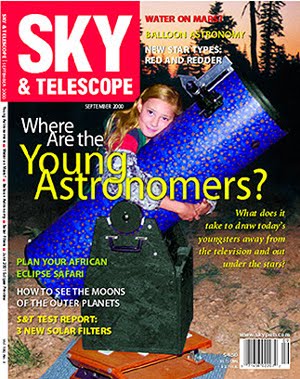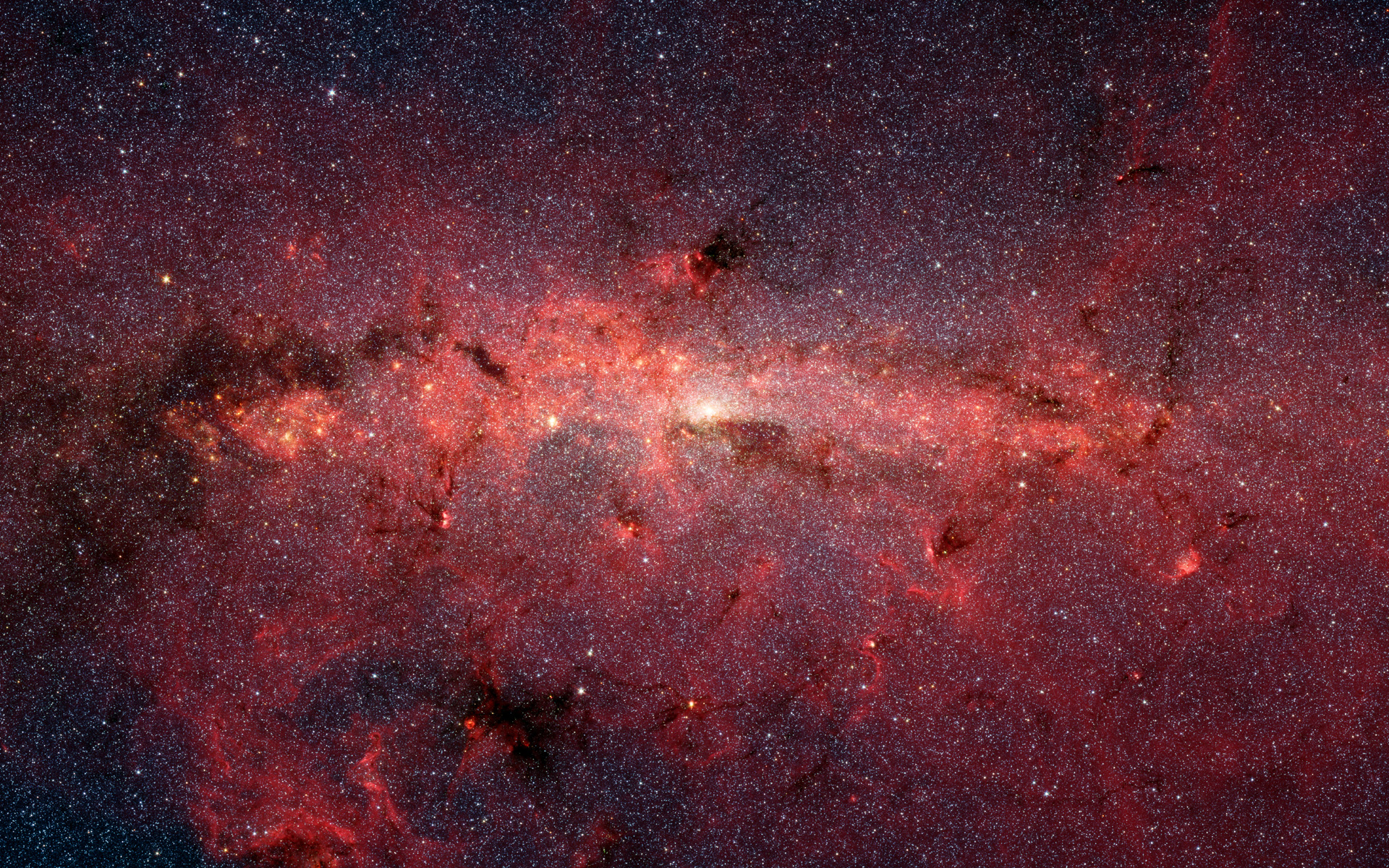Sound pretty tasty? Well, I wasn't chomping on Friskies. The sky last night started out partially clear, and by the time I thought seriously about pulling my scope out, maybe about 8:30, clouds left only a few sucker holes. Bummed, I decided to watch "Life Is Beautiful" on video with my wife. Quite a movie! With that perspective, I stepped out back afterwards, about 11 p.m. and saw.... no.... CLEAR! I headed back in, through to the garage, and out came the 10" f/5.6 Dob. It has been sitting, ready, just waiting for such an opportunity! In went the 20 Nagler and out back we dashed.
I also had a few new toys to play with... I had installed a neat old UO 11x70 finder only days before. I had to rebalance the scope by moving the elevation bearing forward, then cut off some tube from the back end, as the scope bottomed out in the rocker box due to the new bearing position. Kind of a fun project. I had never used a good finderscope before (well, there is a nice 7" AP or two around I like viewing through! ;-) and I just days ago received a complete set of AstroCards which I could now try. What fun!
What I forgot was I had not collimated the scope since moving the bearings. So there I was, outside, clear sky that for all I knew could be gone in fifteen minutes, with a Cheshire (Orion) collimator, red flashlight aimed in it, racing back and forth between focuser and the rear of the scope. I never knew I could work so fast, but I suppose lack of observing is great incentive.
Looking up, I saw Leo sitting well up. Into the AstroCards, I pulled out the Messier card for 10h-Leo. This card contains info for M95, M96 and M105. The guide star on the card was 47-Leonis, a naked eye star sitting below Regulus to its east. It was not difficult to find this mag 3.8 star, which I placed centered in my finder. Hey... this was pretty cool... looking in the finder I could actually identify the bright stars found on the AstroCard! After a bit of confusion... the finder does not show images in the same orientation as the Dob does... I was hopping toward 53-Leonis, a mag 5.3 star. In the finder, it was easy to identify two other stars, at mag 7.4 and 8.0, that formed a nice nearly equallateral triangle with the brighter star. This provided a good jumping off point. Quickly I was on NGC 3433. Now, as amazing as this sounds, I swear it is true... it was *easy* to see, yet its visual magnitude is 11.6 with a 14.1 surface brightness (sb). There's nothing else as bright in the area, so as astonished as I am, I know I bagged it.... easily the dimmest galaxy I've seen from my Los Gatos backyard!
I moved back to the triangle of stars, and used two of them as a pointer to a chain of mag 7 and 8 stars that shown on the AstroCard as being close to M96. While looking in the 11x70 finder, I could hardly believe it... there was something non-stellar there (in the finder). Centered, and there was M96 in the eyepiece. This one was bright, and large. Moving M96 to the edge of the field, in came two other galaxies. Was this M95? No... that one sits alone... this had to be M105, and NGC 3384. 3384 is mag 9.9 with an sb of 12.6.. easy to see. M105 is brighter, mag 9.3 but with the same sb. These too were easy. But there should be a third galaxy in the group, and after some scrutiny, it was visible too... NGC 3389. 3389 was definitely more challenging at mag 11.9, sb 13.2. Funny, as I write this, it seems to me 3389 was dimmer than 3343, yet the latter is almost 1.0 dimmer in sb.
Back to the AstroCard, I could see the next target would be NGC 3412, sitting very close to a bright pair of stars. I could also see I had to use the two non-NGC galaxies I had just observed as "pointers" toward the next object. Well, it was not easy. In fact, after flopping around for a while, I found that mag 5.5 52-Leonis was close by and there were two other galaxies near it. This bright star was easy to locate in the 11x70. I have to admit, a good finder is a real asset. In the field with 52-Leonis was NGC 3377, bright and easy at mag 10.4 sb 13.4. I had to work very hard to detect NGC 3367, which seemed to be involved with a foreground star and was only an occasional smudge, again, odd, since it is mag 11.5 with a 13.2 sb, making it presumably easier to see than a few "easy" ones viewed just minutes earlier.
With 52-Leonis and NGC 3377 as markers, I was able to move back toward elusive NGC 3412 and the pair of stars close by. The stars stood out well in the finder, being mag 7.8 and 8.4, and soon, a dim glow appeared in the eyepiece. NGC 3412 is a mag 10.5 elliptical with sb of 12.6. Perhaps the conditions were deteriorating, as this one too should not have been a tough as it was.
Back over to 52-Leonis, I could use the star and NGC 3377 to point to a clump of bright stars that were nearby on the AstroCard. Soon, I was there, and logged NGC 3338 (mag 11.1, sb 14.2) and on to NGC 3300 (mag 12.1, sb 12.7).
A few other items remained on the card, but the Telrad was getting dewed up, and it was now late. I went for M65/66 and found them in the finder! In the eyepiece, NGC 3628 was a no-doubt long nearly edge-on spiral, making the Leo Triplet a great view. I hunted around there for a while more, using the M65/66 AstroCard, but fatigue, Mexican Coffee, and dew were winning. I went to M3, an easy finder target, and it looked "okay" but I've seen it better from the backyard. On to M51, I could see the two cores but not fuzzy detail around them.
I'd gotten my fix. I was happy. A little late night cat chow up in Leo was all it took. I really enjoyed using the AstroCard. It is nice to have the chart by the eyepiece, with good finderscope stars charted. It is also very nice to have a good finderscope. I can't wait to take this setup to Montebello!












No comments:
Post a Comment